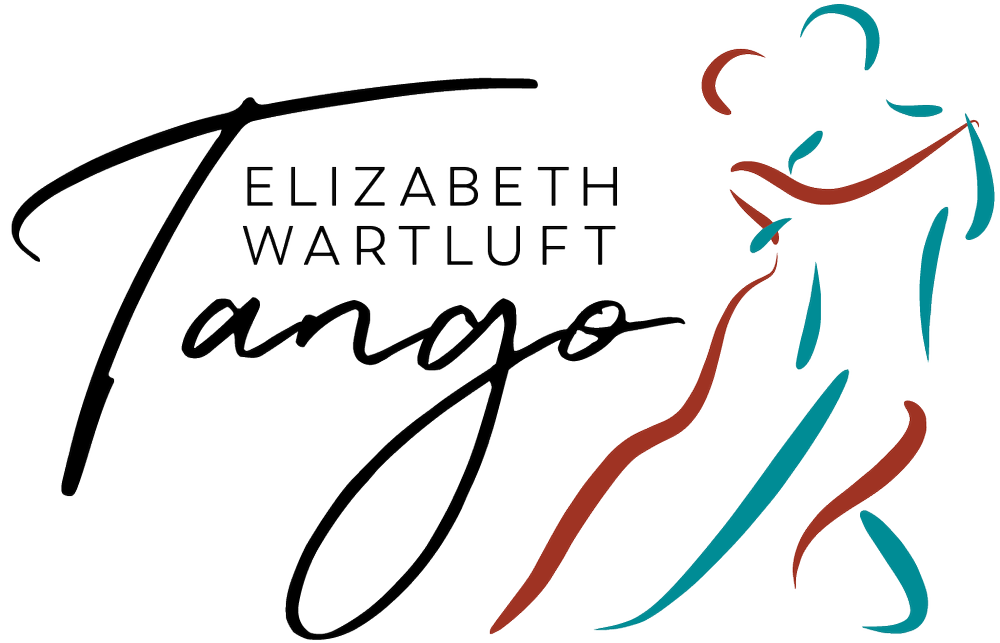After hearing several people bemoan not being able to find partners at the last milonga and seeing several folks sitting staring at the floor last Friday, I think it’s time to polish our cabeceos!
What is a cabeceo?
A cabeceo is a gesture of the head, inviting someone to dance in the case of tango. The potential dance partners make eye contact. The person who is going to lead (usually) makes a subtle head gesture and or facial expression to invite the potential follower to dance. The person receiving the invitation can accept with a smile or an affirmative nod. One can refuse the invite with a “no” head gesture, but that is rare. Usually, the response is to not make eye contact with meaning that one does not want to dance.
Why do we cabeceo?
A cabeceo is very useful when in a crowded dance space. If you want to dance with someone, but they are across the room, the only way to forestall someone else getting there first, is to establish eye contact and agree to dance, and then make one’s way to the follower’s table or to a mutually indicated place to start dancing.
I was taught that the cabeceo protects the leader (traditionally a man) from the ignominy of crossing the floor to openly offer to dance, only to have the follower say no. Most people would prefer a private “no” to the walk of shame back to the other side of the dance hall, watched by the other dancers.
For me, if someone is looking eagerly at me, waiting for me to ask them to dance, I know that if I invite, they will probably say yes. Traditionally, this is how a woman invited the man to invite her to dance. It’s very circular, isn’t it?
Who benefits from the cabeceo?
The cabeceo gives the power of choice to the follower. There is no pressure to agree to a dance. Several beginner men in the Portland community have told me that they can’t get a dance because no one will look at them. As a woman raised in a patriarchal society, it is hard to say “No!” when offered a hand. It is much easier to say no from afar by avoiding a cabeceo.
The cabeceo also benefits introverts. As a shy person, it took me a while to get good at doing a cabeceo that required longer eye contact than usual in North American society. However, once I mastered that, it was easier to cabeceo than to walk up and ask folks to dance the way extroverts do.
Does the cabeceo still function?
In Portland, there are many dancers who have not practiced the cabeceo enough to use it well. There are other dancers who use North American versions of invitation, such as appearing at someone’s table and verbally asking for a dance or holding out a hand. On top of that, because many of us lead and follow, and many of us dance with partners of all gender identifications, it can be hard to figure out how to adapt the cabeceo to a situation where anyone might lead, and anyone might follow.
In Buenos Aires, I have only experienced this chaos at a queer milonga. No one seemed to know where to look. Someone asked me to dance from the next table. I danced with people, as a leader and a follower, and each tanda was a negotiation: “Do you want to lead? Or switch? Can you lead? I don’t want to!” It was a chaotic situation, much as it is at most milongas here in the USA.
I think the cabeceo is particularly useful for long distance agreements to dance. I sometimes initiate cabeceos, whether as a leader or a follower, with men or women. When I started to dance in the 1990s, this was not ok, but now it is accepted most places, and I do it as much in Buenos Aires as in Portland. Of course, after all these years, I don’t really worry about breaking some of the rules because I don’t care as much if I dance or not all evening :-)
How to use the cabeceo to your benefit
Make sure your target can see you! For many of us with aging eyes, we might need you to stand or sit close to us to make eye contact. Wait until I put my glasses on to cabeceo!
If you have someone specific in mind, sit up straight, send positive energy towards that person, and look interested in dancing! If you just want to dance, a more gradual pan of a group of potential partners will show you who is also searching broadly and may want to dance. Smile!
Move to a chair a short distance away from someone. Make it clear that you are trying to cabeceo. If they still ignore you, that’s a polite no-thank-you.
If someone has ignored you a few times, don’t give up on them forever, just for that night or a month or two, and then try again.
If someone is in deep conversation, that’s not the time to cabeceo. If a person wants to dance, they will look around. Don’t waste your time trying to pry someone away from their best friend.
The cabeceo is a part of tango culture, and as such, we should teach it and practice it to understand tango’s history better, even if not everyone uses it.


